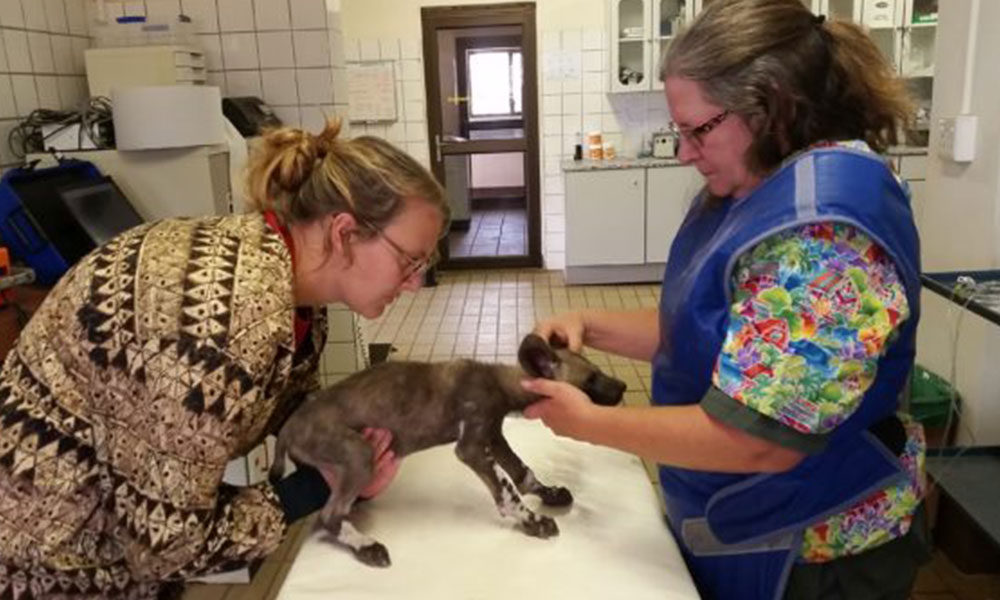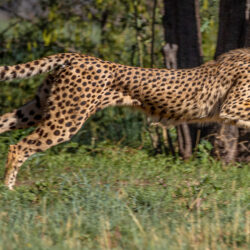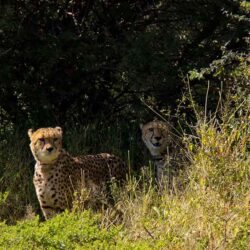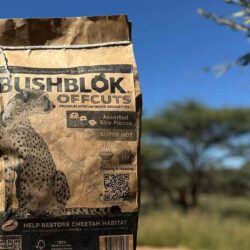African Wild Dog Update
-

- by November 30, 2017

On the 27th October our African wild dogs moved to their new enclosure! The move went very smoothly, we were able to take blood, vaccinate and move them all to their new home in the same morning!

The two older males are now 6 months old and our younger puppies are now 3 months old. They are still doing very well, growing up fast and eating a lot.
At their new enclosure, they have lots of space to run around, dig, play and generally be wild puppies. We still feed them twice a day, the 1st feed being nutritious organ meat and the second feed is meat off the bone. They work together as a small pack when eating from the bone and vocalise a lot toward each other, normally running around playing with the bones once they’ve finished eating too. Each one of their personalities is really starting to shine through now and they are becoming independent and confident. They started exploring their new enclosure almost immediately and were running around together sniffing everything possible.
We built a large dirt mound which they can climb, they tend to spend their afternoons there in the sun looking over the African landscape in a big pile together. Their new enclosure has also allowed us to do much more enrichment with them, to not only give them physical stimulation but also mental stimulation. Their favourite so far has been blood trails, this involves them having to sniff out little trails that we have made through out their enclosure and following them to the food rewards at the end. They become very excited and run as fast as possible whilst making a lot of excitable noises.
In case you missed it! – The Backstory
During the summer of 2017, CCF began caring for nine African wild dogs, also known as painted dogs, at our Research and Education Centre in Namibia. The first two pups, named Zebra Legs and White Neck, were picked up from a very remote region in the Eastern Communal area (within the Greater Waterberg Complex), after the Ministry of Environment and Tourism (MET) was informed that a communal farmer had killed half of the litter and would kill these also if someone did not come get them. Working with MET, CCF assisted by collecting the pups, which were about one month old. African wild dogs are listed in the IUCN Red List as an endangered species, and they are a protected species in Namibia.
Like cheetahs, wild dog rangeland is fragmented into isolated pockets. Their populations are scattered throughout only a few areas in Africa and today there are less than 4,500 painted dogs left in the wild. Also like cheetahs, one of the main threats to wild dogs is human/wildlife conflict. Livestock farmers don’t like them!
When Zebra Legs and White Neck were 13 weeks of age they were joined by seven other orphan pups that were only 5 weeks of age. Everything we learned from caring for orphaned cheetahs, we applied to caring for another predator in desperate need of help. While we may not be able to release the wild dog pups back into the wild, we hope to be able to release them into a sanctuary. We are working with very closely with the Namibian government and other NGOs to help African wild dogs as well as cheetahs have a wild future.
Banner photo: Sharp Photography, sharpphotography
Taken in Tswalu Kalahari Reserve, South Africa
Related Reading
-
October 14, 2025
Cheetahs Were Born to Run -
July 3, 2025
Double Your Donation During July and August




